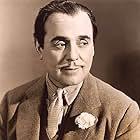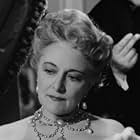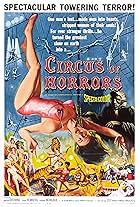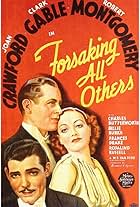Four passengers escape their bubonic plague-infested ship and land on the coast of a wild jungle. In order to reach safety they have to trek through the jungle, facing wild animals and attac... Read allFour passengers escape their bubonic plague-infested ship and land on the coast of a wild jungle. In order to reach safety they have to trek through the jungle, facing wild animals and attacks by primitive tribesmen.Four passengers escape their bubonic plague-infested ship and land on the coast of a wild jungle. In order to reach safety they have to trek through the jungle, facing wild animals and attacks by primitive tribesmen.
Chris-Pin Martin
- Native Boatman
- (as Chris Pin Martin)
Joe De La Cruz
- Native
- (as Joe de la Cruz)
Delmar Costello
- Sakais
- (uncredited)
E.R. Jinedas
- Native
- (uncredited)
Minoru Nishida
- Native
- (uncredited)
Teru Shimada
- Native
- (uncredited)
- Director
- Writers
- All cast & crew
- Production, box office & more at IMDbPro
Storyline
Did you know
- TriviaAccording to "Cecil B. DeMille's Hollywood" by Robert S. Birchard, the 96-minute version of the film was only shown at a test screening in Huntington Park, California, on December 15, 1933. That version, including Claudette Colbert's nude scene, was seen by a test audience composed mostly of kids who were there waiting to see the war aviation movie Ace of Aces (1933). Audience feedback stated the movie was too long by ten minutes, and that further character set-up was necessary. To accommodate this DeMille added in the opening blurb that the movie was filmed on real locations and he included brief bios for each of the four frightened people. DeMille then screened the movie and decided that the test audience was correct, and cut a "thousand feet" from the film, resulting in the 17 minutes cut from the test version. So then the 96-minute "longer" cut was never actually shown to a mass audience; the only certain thing about it was that it included sequences with Ethel Griffies, who played the mother of Arnold Ainger (Herbert Marshall).
- GoofsJudy is seen in an outfit of leaves then is next seen in a leopard skin but she's never seen trapping, or killing the animal or preparing the the skin. Later Gargan is also seen in an animal skin.
- Quotes
Mrs. Mardick: It's not the heat really, it's the humidity.
- ConnectionsFeatured in Claudette Colbert: Queen of Silver Screen (2008)
Featured review
Four Frightened People is an interesting, if badly named, survival thriller from the 1930s. It was somewhat ahead of its times, with a brief nude sequence and a muted feminist theme, with an active heroine by the standards of its time.
The film follows four people who flee a cruise ship that has been infested by the bubonic plague. They land in a jungle portion of Malay and have to travel through the wilderness to get back to civilization. Along the way, they confront wild animals and hostile indigenous people.
This film takes some unexpected turns that make it more interesting. At the beginning, we assume the heroine will end up romantically attached to the brash leader of the group. However, DeMille takes the plot in a much different and more satisfying direction, making good use of character development to defy our expectations.
Four Frightened People also defies expectations through its treatment of Claudette Colbert's heroine. Initially a whiny, easily pushed around schoolmarm, she becomes arguably the most influential member of the group, pushing the men to become more proactive. Although the film's ending and a few damsel in distress scenes undermine the proto-feminist theme, the film is still quite progressive for 1934.
The film's content is also surprisingly risqué. At one point, we see Claudette Colbert's character showering nude, and the supporting female character gets Malay women to deny their husbands sex.
One aspect that does date the film is an undercurrent of racism. The depiction of the indigenous people is definitely patronizing, particularly the character of Montague. Still, the film is far better in those terms than other old jungle films such as White Pongo.
The film follows four people who flee a cruise ship that has been infested by the bubonic plague. They land in a jungle portion of Malay and have to travel through the wilderness to get back to civilization. Along the way, they confront wild animals and hostile indigenous people.
This film takes some unexpected turns that make it more interesting. At the beginning, we assume the heroine will end up romantically attached to the brash leader of the group. However, DeMille takes the plot in a much different and more satisfying direction, making good use of character development to defy our expectations.
Four Frightened People also defies expectations through its treatment of Claudette Colbert's heroine. Initially a whiny, easily pushed around schoolmarm, she becomes arguably the most influential member of the group, pushing the men to become more proactive. Although the film's ending and a few damsel in distress scenes undermine the proto-feminist theme, the film is still quite progressive for 1934.
The film's content is also surprisingly risqué. At one point, we see Claudette Colbert's character showering nude, and the supporting female character gets Malay women to deny their husbands sex.
One aspect that does date the film is an undercurrent of racism. The depiction of the indigenous people is definitely patronizing, particularly the character of Montague. Still, the film is far better in those terms than other old jungle films such as White Pongo.
- TheExpatriate700
- Jan 14, 2012
- Permalink
- How long is Four Frightened People?Powered by Alexa
Details
- Runtime1 hour 18 minutes
- Color
- Aspect ratio
- 1.37 : 1
Contribute to this page
Suggest an edit or add missing content

Top Gap
By what name was Four Frightened People (1934) officially released in India in English?
Answer




























